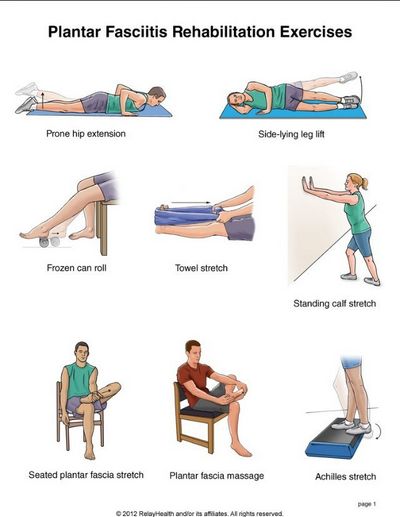Plantar fascitis causes pain at the heel joint.

It is most commonly felt after you have been sitting or standing for a while and then you take your first few steps in the morning. It usually feels better after exercise but becomes worse if you keep your feet on your heels for very long. Plantar Fasciitis and Plantar Fascia Your plantar fascia help support the tendons and muscles of your heel.
The plantar fascia is made up of a series of muscles and connective tissue that runs down the back of your leg. When you stretch these tendons they tend to stretch, but they are also vulnerable to injury and become irritated. Plantar Fasciitis is caused by too much tension in these muscles, especially the plantar fascia itself.
When you do something like sit for too long, put a lot of pressure on your plantar fascia, or just make constant contact with hard surfaces that are not soft, it can cause damage to the fascia. This causes inflammation. The inflammation can be acute or chronic. Inflammation of the plantar fascia can happen in a few different ways. Below we will discuss some of these ways that can occur.
Pain and tenderness around the plantar fascia is a common symptom of this condition.

You may also notice that there is pain in the heel itself, particularly when you walk or run. Other symptoms include inflammation of the inner side of the heel, the inside of the heel, or pain along the outer side of the heel.
Another common way that you may notice that your plantar fascia is inflamed is if you stand or walk with an extreme amount of pressure applied to your plantar fascia. For example, if you are lifting heavy objects and feel pain, you should stop right away. If you continue to apply pressure it can lead to the tissue becoming damaged and you may develop a herniated plantar fascia.
If you have been injured before, it is common for your injury to cause a flare-up of this condition. However, you should not feel bad about the fact that you have been hurt because the injury could not have been prevented. Your plantar fascia is very resilient and can heal itself.
The cause of plantar fasciitis is still unknown, although many believe it is caused by the wear and tear of the plantar fascia over time. Others believe that it is caused by repetitive stress on the tendon and ligament. The most likely culprits for this type of condition are being overweight and wearing shoes that are poorly designed. Many athletes also experience this condition from the repetitive impact that they receive from athletic activities such as running, jumping and landing from diving and jumping.
When you are experiencing pain in the heel, do not hesitate to seek medical attention.

Do not allow it to go untreated because if it is left alone, it will only get worse and cause more pain and can result in a serious condition.
If you do not feel comfortable consulting a physician, you may want to try to treat the painful condition at home using topical creams and medications. Using over the counter pain relievers or antispasmodic medications can help treat the pain as well as reducing the inflammation.
While using over-the-counter products to treat plantar fasciitis is one option, there is also a surgery that is available to cure the condition. It is possible for the heel to be removed in the doctor’s office and replaced with one made specifically to relieve pain. the problem of plantar fasciitis. This surgery has been found to be very effective in eliminating the condition but is not recommended by most doctors for people who have had the condition for more than six months.
In most cases the surgery to remove a heel is performed on a patient who has had the condition for less than six months. If the condition is caused by the injury, then the surgery is usually performed to fix the cause of the problem rather than just treating the pain and the inflammation. This type of surgery involves removing the plantar fascia completely. A small incision is made near the heel bone so that the tendon can be tied off.
Before the surgery to remove the plantar fascia is performed, the doctor may also recommend that you undergo rehabilitation to strengthen the plantar fascia muscle to help prevent further injury. Heel and foot specialists recommend that patients who have experienced a flare-up to use these exercises after the surgery. These exercises help strengthen the plantar fascia and help prevent any further injury to it.